Lure fabrication
Essential modifications are crucial when fishing professionally for bass or walleyes
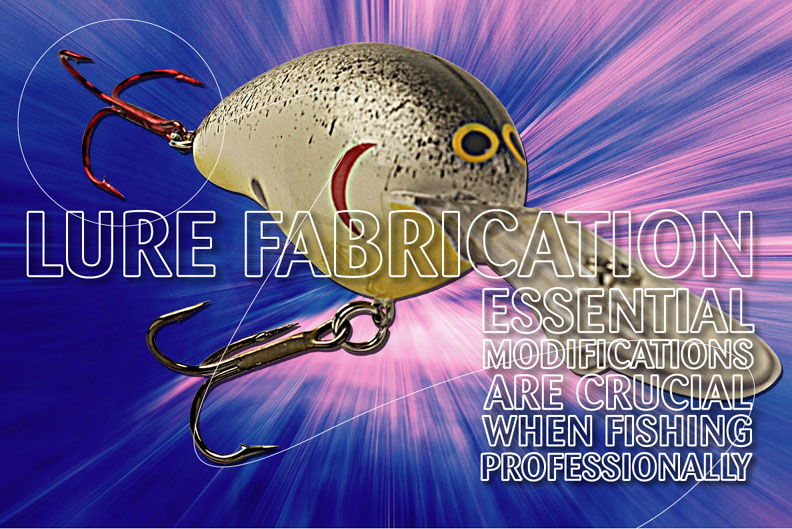
Walk into any tackle shop or thumb through any fishing catalog, and you will be greeted with a dizzying array of hard- and soft-body baits. Each of these comes with its own unique properties, including depth, color, sound, speed, size, weight, hooks and motion.
Of course, you would think (naturally enough) that by the time you lay out your hard-earned money for one of these fish-catching sweethearts, pulling that bait straight out of the box, tying it on and pitching it out is just about all you need to do with it. With all the research and development going into today’s baits, that lure should be perfect from the first cast.
And maybe it is. But is it perfect enough, meaning, will it do exactly what you need it to do to match the conditions in which you are fishing in order to induce a fish to strike?
Successful fishing, like a lot of things in life, lives in the little details. The pros know this and practice it every time they fish. In fact, it is this near-religious attention to even the smallest details, including making modifications to baits, that most separates the results that pros get from the results that we average anglers get when we fish on the weekends.
Lure details
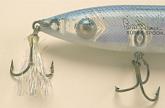 While you cannot argue that there are a lot of artificial baits available for a lot of different applications, to some extent these baits are still sold on a “one size fits all” basis. There is just no way that a lure manufacturer can make and mass-market a lure that is tailored specifically for each body of water and species that is going to be fished and for each given set of conditions the angler will encounter. Some level of detailed customization – based on an angler’s experiences, observations and even hunches – can make all the difference between success and failure, and that customization has to come from the guy using it.
While you cannot argue that there are a lot of artificial baits available for a lot of different applications, to some extent these baits are still sold on a “one size fits all” basis. There is just no way that a lure manufacturer can make and mass-market a lure that is tailored specifically for each body of water and species that is going to be fished and for each given set of conditions the angler will encounter. Some level of detailed customization – based on an angler’s experiences, observations and even hunches – can make all the difference between success and failure, and that customization has to come from the guy using it.
EverStart Series Western Division pro Phil Strader of Glide, Ore., is a 38-year-old bass man who has been fishing Western impoundments in Oregon, Washington, Arizona, California and Nevada for years. He cut his teeth on farm ponds before moving to club fishing and later to state-level tournament fishing. He then jumped to the EverStart Series circuit, where he has been fishing for two seasons.
Strader competes on such challenging waters as Havasu, Shasta, Mead and Clear Lake in California, along with fishing the California Delta, and he will be the first to tell you that modifying lures is job No. 1 before and during his tournaments.
Hard-body baits
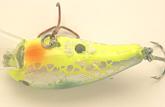 Overall, Strader says one of the most important modifications that any angler can and should do is to switch out the hooks. “Crankbaits, top-water baits, jerkbaits … the first thing I do is change the hooks out as soon as I pull that bait out of the box,” Strader said. “I put extra-wide gap trebles on. They’re ultrasharp, you get better hooksets, they don’t bend out and they hold fish better because of the bend on them.”
Overall, Strader says one of the most important modifications that any angler can and should do is to switch out the hooks. “Crankbaits, top-water baits, jerkbaits … the first thing I do is change the hooks out as soon as I pull that bait out of the box,” Strader said. “I put extra-wide gap trebles on. They’re ultrasharp, you get better hooksets, they don’t bend out and they hold fish better because of the bend on them.”
After that, the bass pro makes critical adjustments to weight. “I really like fishing with jerkbaits,” Strader said. “That’s my go-to bait. But I want it to suspend in a certain way that I think is really important, so I’ll add suspend strips to it and put just enough on there so the jerkbait barely rises in the water. You want it to rise up ever so slowly so that when you pause the bait, it holds instead of rising away from the fish. Then you twitch it again, and that will often initiate the strike.”
Strader is a big believer in keeping jerkbaits and stick baits in the strike zone as long as possible, so he will also use tungsten sticky weight while he is fishing. “It’s just so important for baits to suspend properly,” he said. “The sticky weight is really easy to do that with, and you can modify it all day long, taking it off and putting it on, to make the bait go up or down depending on what you’re fishing.”
But Strader adds that you do not always get the results you are looking for just by modifying the bait itself. Sometimes the best change you can make to a lure is not to the lure at all.
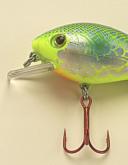 “At Clear Lake last April I was using a suspended bait with some tungsten, and I was actually getting too deep,” he said. “I was using 12-pound Maxima line, and it just wasn’t at the right depth. So I switched to 15-pound Maxima and modified the weight of the lure that way. It made the bait go about a foot less deep in the water, so that it was just above the weeds. It was perfect. Then when I wanted to fish it deeper, I went to 8-pound-test line.”
“At Clear Lake last April I was using a suspended bait with some tungsten, and I was actually getting too deep,” he said. “I was using 12-pound Maxima line, and it just wasn’t at the right depth. So I switched to 15-pound Maxima and modified the weight of the lure that way. It made the bait go about a foot less deep in the water, so that it was just above the weeds. It was perfect. Then when I wanted to fish it deeper, I went to 8-pound-test line.”
Crankbaits are killer on both bass and walleye, of course, and customizing these wobbling body baits is a high science. “With a lot of the crankbaits I fish, I’ll add fingernail polish to paint them up, especially colors like red or bright orange,” Strader said. “I like to put bleeding lines coming off the gills, especially on the shad-type crankbaits. I think it’s important to have some red coming off those gills.”
Tuning crankbaits so they will run true is also an important step, though Strader says it is not often required anymore unless you are banging rocks a lot or catching hard-fighting fish that are bruising up the lure. If tuning is required, simply turn the eye of the bait with a pair of needlenose pliers until it tracks true and straight in the water.
 Top-water baits are another category of lures that definitely benefit from angler adjustment. “I really like to fish top-water,” Strader said. “And I like poppers a lot. But a lot of the poppers these days I modify quite a bit. I think a lot of them put out too much splash, so I’ll take a hook file and flatten the bottom part of the lip so it doesn’t spit so much, and it gives the bait more side-to-side action. It makes a lot of difference.”
Top-water baits are another category of lures that definitely benefit from angler adjustment. “I really like to fish top-water,” Strader said. “And I like poppers a lot. But a lot of the poppers these days I modify quite a bit. I think a lot of them put out too much splash, so I’ll take a hook file and flatten the bottom part of the lip so it doesn’t spit so much, and it gives the bait more side-to-side action. It makes a lot of difference.”
Strader also wants more visibility for his top-waters, particularly toward the tail section. “I generally put on some sort of a feather or a mylar treble on the back, because I like to have a little extra action back there, and it swims behind the lure a little bit. I do the same with Spook-type lures.”
Another pro secret involving pre-fishing workshop time is to drill a small hole in the belly of the bait and insert some BBs. “I’ll drill a hole in the belly of a hard plastic bait, insert the BBs, and then seal it back up with silicon and glue,” Strader said. “By experimenting, you can adjust the number of BBs for weight and suspension. Plus you get some really good vibration and rattle.”
On the West Coast, where swim baits that mimic stocked trout are popular, Strader has another trick up his sleeve. “If they’re heavier than what I want, I slice the bait open, remove some of the weight with wire cutters, and seal it back up with a hot soldering gun. That way, when the weeds get up or you’re fishing heavy grass, the swim bait is a little lighter.”
Soft-body enhancements
Strader’s improvements extend also to his soft baits, particularly jig trailers. “One of my first and foremost baits that I like to use is a jig,” he said. “I use a Yamamoto twin-tail grub as the trailer. But if I’m fishing off-colored water, like anything with 2 feet or less visibility, I dip those tails in chartreuse dipping dye. I dip the lower half of the tail, and then the grub stands out in the water that much better.”
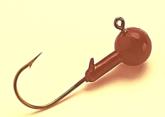 He also uses that same chartreuse dye on his other plastics, like on lizards and even finesse worms. “Any time that water is off-color, I’ll use it,” he said.
He also uses that same chartreuse dye on his other plastics, like on lizards and even finesse worms. “Any time that water is off-color, I’ll use it,” he said.
Strader has one more bass ruse, too – this one for his jigs. “I use brown and black jig heads, but I like to add a little bit of extra color to them, to try to make them look more like a crawdad shell. So I add a clear-coat fingernail polish with orange/red glitter in it.”
Walleye refinements
Walleye baits also benefit from angler alterations. Blade baits, for instance, can be modified to more exactly mimic prevailing baitfish and forage fish that walleyes might be feeding on. A good example is to use a Sharpie to make polka dots on silver or brass blades to imitate crappie fry during the crappie spawn, while drawing scraggly vertical lines on a brass blade can make the blade bait look more like perch fry when small perch are present.
Prism and fish-scale tape for blade baits can be added, too. These tapes are now on the market with a great variety to choose from. A good source is Columbia River walleye guru Larry McClintock with Critter Gitter Custom Walleye Tackle in Portland, Ore., who can be contacted by phone at (503) 257-0553. Another source is Jann’s Netcraft in Ohio; call (800) 638-2723.
A lot of walleye anglers also fiddle with the hooks on their blade baits, including removing front hooks so the blade does not hang up as much on the bottom or wrap around your line as much. They also switch out treble hooks for duo hooks for better hooksets.
Of course, worm harnesses are probably the one bait that walleye anglers experiment with the most. They adjust them with different colored beads, spinner colors and shapes, and they mix up combinations of beads with flash collars (also known as wedding rings) by adding Day-Glo beads and fluorescents and mixing and matching different color combinations. Hooks and the lengths between front and rear hooks are other adjustments that a lot of walleye pros make. Some West Coast state-tournament anglers gear down the size of their hooks, for example, to give their night crawlers more natural action behind the spinner.
If you like to fish with round-head jigs, another area in which to experiment is with powder coat colors. Day-Glo, hot oranges, hot pinks, chartreuse and other colors are available for dipping round leadheads in to match a variety of conditions, particularly stained water.